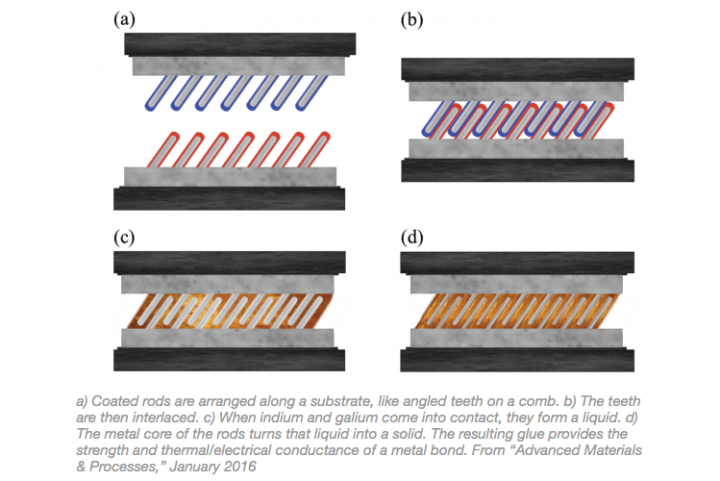
MesoGlue was developed by Huang and his two Ph.D. graduate students, Paul Elliott of Northeastern University and Stephen Stagon now at the University of North Florida. The trio initially were working on a way to improve the operational life cycle of dye-sensitized solar cells when they had an “aha” moment that led them to expand their solar cell research to adhesives.
The glue uses nanostructured metals that can adhere to each other at normal room temperatures. The team leveraged their expertise with nanoscale technology to create metallic nanorods out of highly purified metals. These nanorods are arranged at angles like the teeth on a comb and coated with indium on one side and gallium on the other. This arrangement allows the rods to interlock and fuse together in a weld-like bond.
Related: Despite being made of 90 percent water, MIT’s hydrogel superglue is ridiculously strong
The technology hinges on the reaction between the metal-coated nanorods When the metal-coated nanorods come in contact with each other, they slide together, allowing the indium and gallium to come into contact. This pairing kicks off a chemical reaction that causes the two elements to liquefy. This liquid amalgam then is hardened by the metal core of each rod, creating a single structure that holds together like glue.
The MesoGlue exhibits both thermal and adhesive properties that can be used in a variety of different capacities. The most promising application is the use of the MesoGlue as a solder replacement for the room temperature welding of pipes and other metals. It also may be used as a thermal paste for CPU cooling and other interfaces that require a thermal element. Because of the chemical reaction between gallium and indium, the bonding agent also may be used to connect two materials that usually don’t adhere together, such as glass and metal. Huang and his research team published their latest research on the MesoGlue in the January issue of Advanced Materials & Processes.




